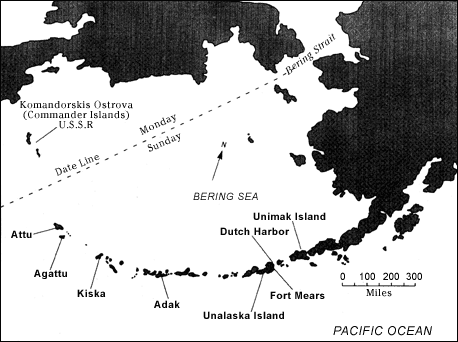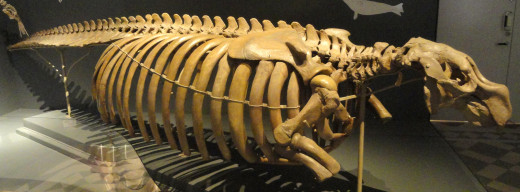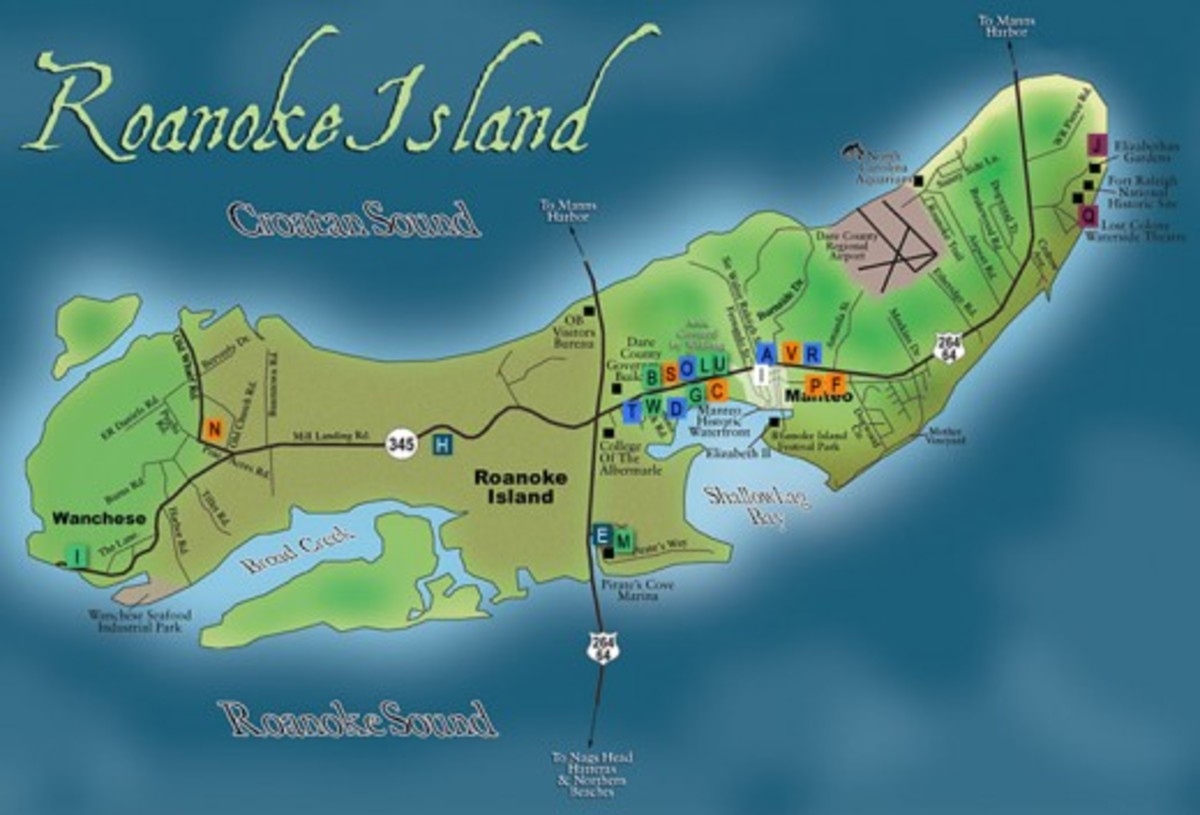Steller's Sea Cow

Today there are four species of sirenians. These include:
- The dugong, which inhabits the warmer waters of the Indiana Ocean and western Pacific Ocean.
- The West Indian Manatee, which inhabits the Gulf of Mexico, the Caribbean Sea and the rivers which empty into them.
- The Amazonian manatee, found in the Amazon River system. It lives only in freshwater.
- The West African manatee, which inhabits the coastal waters of the Atlantic Ocean between Senegal and Angola, and the rivers which feed into the Atlantic.
There was once another sirenian, known as Steller's sea cow. It was found in the waters around the remote Commander Islands off Russia's Pacific coast. Steller's sea cow was discovered in 1741 and none were ever spotted after 1768.
Vitus Bering's Expedition
Vitus Bering was born in Denmark, although he went on to serve in the Russian Navy, which was building up its strength under Pete the Great. In 1725 he lead an expedition to map the land and seas on Russia's Pacific coast. In 1740 he set sail on a second expedition with the goal of reaching North America.
Also on that voyage was a German naturalist named Georg Steller. He documented the plants and animals that were encountered. He discovered six previously unknown species:
- Steller's sea cow
- Steller's eagle
- Steller's sea lion
- Steller's jay
- Steller's eider
- Spectacled cormorant
The expedition sighted 18,000 foot Mount Elias on the Alaska Canadian border, On the return trip to Russia, they stopped at Kodiak Island, Kayak Island, and some of the Aleutian Islands. Bering, like many of his sailors, suffered from scurvy on the voyage. Eventually he became too ill and had to relinquish command. The storms of the northern Pacific also took its toll on Bering's ship. His ship wrecked on what is now Bering Island in the Commander Islands group.
Bering died on the island that now bears his name. Initially, the survivors were able to catch sea otters and grouse for food. These animals had never seen humans before, and did not fear them. They quickly learned to stay away from humans, so the only available food source was an animal they had never seen before. It is now known as Steller's sea cow, named after the only scientist who ever saw it alive.
The animal was very large - Much larger than manatees or dugongs. They lived in herds, and had to stay near shore to find the aquatic plants they fed on. They were apparently unable to submerge according to Steller's writings. This made them very easy to hunt. Steller reported that the only difficulty was hauling them ashore after they were killed. The taste of their meat was excellent, similar to veal or beef. Since they were so large, a single animal could feed 33 men for a month.
The expedition spent nine months on Bering Island. Since they arrived in November, they had to spend a harsh winter on the treeless island. The survivors were initially unsure if they were on the Kamchatka peninsula or an island. They eventually determined it was an island. Fortunately, they were able to build a new ship out of the remains of the old one, and return to Kamchatka, where they found out that they had been declared dead..

Extinction of Steller's Sea Cow
Scientists believe Steller's sea cow was once more widespread around the north Pacific, from Baja California to Japan. Since they were so easy to hunt, native hunters quickly exterminated them wherever they encountered them. By the time of Bering's second expedition, the only ones left were around the Commander Islands, which were uninhabited at that time (The islands were first settled in 1825 and the population was about 600 in 2009).
When the survivors of the expedition returned to Russia, word of the tasty Steller's sea cows spread rapidly. Soon, many ships, especially those involved with the fur trade, were stopping at the Commander Islands for fresh meat. Steller's sea cows were found around Bering And Copper (also called Medney) islands, the two largest in the group. It is thought that there were only about 1,500 sea cows in existence when Steller discovered them. They were gone from the waters around Copper Island by 1750. The last confirmed sighting of Steller's sea cow was in 1768, when one was killed off Bering Island.

Sources
- Rare & Extinct Creatures - Steller's Sea Cow (Great Northern Sea Cow)
- Steller's Seacow
- The Beasts of the Sea
This is Steller's original publication. - Steller's sea cow - Wikipedia
- The IUCN Red List of Threatened Species
- Northern Pacific Ocean Theme Page: Vitus Jonassen Bering
Provides metadata relating to the biology, meteorology, and oceanography of the North Pacific Ocean from research institutions throughout the world. - Alaska History and Cultural Studies - Russia's Colony









